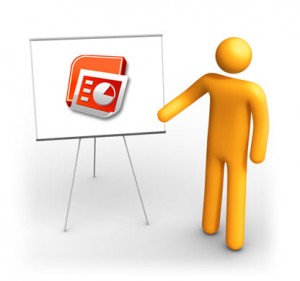“Once upon a time …”
You say those words to any child and they visually go into a trance. These were the words that were always used to tell a story. When my children were small, my wife would give them their bath and I was the story teller.
I would come into the room, with our book for tonight. And as you might know, sometimes it was the same book each night because they loved the story so much. I would love to look into their eyes as I said those magic words. They would almost fall into a hypnotic state.
When I was small, my grandmother would not do the “once upon a time,” but when she would motion me over, that was the signal that it was story time. She would tell me stories about her growing up, things she did as a child. I would sit rapt, listening to her. She was a great storyteller.
The “crutch” for speakers today
Think of your family history, it was told by someone and passed down over the ages — “Once upon a time.”
Even today, I will go anywhere to hear a great speaker. In other words, “Once upon a time.”
I belong to human resources group in New York called the HR Network. It is a gathering of senior level HR executives from all the top companies in New York City. More importantly, it is a learning forum for HR professionals.
At each gathering, Kate Wendleton, the CEO of the 5’O Clock club which sponsors this group, presents a panel that consists of HR leaders. The subjects the panel talks about are all topical issues that HR is currently struggling with, whether it be engagement, talent management, or whatever. Each presenter is given approximately 15 minutes to tell their story of how they are dealing with this issue.
The catch is this: NO POWERPOINT ALLOWED. While you are allowed to have handouts, “No PowerPoint is allowed.” It’s just you, the microphone, and the audience. You tell your story without the aid of a crutch. Once upon a time.
 I say “crutch” because that is what it has become. PowerPoint, or the “Deck” as it is now called, is in my opinion the most overused tool in our tool kit. More time is spent on the deck than is spent on the message.
I say “crutch” because that is what it has become. PowerPoint, or the “Deck” as it is now called, is in my opinion the most overused tool in our tool kit. More time is spent on the deck than is spent on the message.
Homicide by PowerPoint
Are you losing people when you make your pitches? If you are, it is probably because you are committing homicide by PowerPoint.
PowerPoint is a staple of business today. Off all the programs in Microsoft Office, this one is supposedly the thought driver. Why? Because we have become so addicted to putting our thoughts into slides. Yet, we all know the inward, but deeply felt, groan you hear when you find that you have to sit through 50 slides in an hour-long presentation? Well, everyone else feels that way when you do your presentation that ends up like that.
So why do we put our audiences through that? Are we unprepared or insecure? Do we think our audiences are so simple they won’t “get it” unless we give it to them slide after slide?
Just tell your story
The word narrative means a constructive format that “describes” a sequence of events. The word derives from the Latin verb narrare, which means “to tell.” That being said, our presentation is to tell a sequential story.
Imagine for a moment that the great coaches in sports were corralling their team into a room and telling them how to win by using PowerPoint slides. No, the great ones tell a relevant story that syncs into what they are trying to accomplish.
It comes down to this: If you can’t tell it, you can’t sell it.
One of the greatest books that I have read in a while, and one that I would suggest for anyone with duties call for presentations or speeches, is Tell to Win by Peter Gruber. The subtitle says it all — “Connect, Persuade, and Triumph with the Hidden Power of Story.”
Every great leader throughout history had the power to move people by telling stories. Success is won by creating compelling stories that have the power to move people.
Slides as a simple guide, but no more
In the book, Peter Guber walks you through a set of principles that will allow you to reach your goal or the reason for your pitch. It methodically explains how to move beyond PowerPoint to create a compelling story that have the ability to serve as powerful call to action. The call to action is the reason that we present anyway. It allows you to turn passive listeners into active participants.
Don’t get me wrong; slides may still be needed in your presentation, but only as a backdrop or road map. Let the slides become the guide. Craft your story to let each slide serve simply as a stepping stone to the story climax that you will tell the audience.
So, next time you are working on that “deck” and agonizing over content, remember this: “If you can’t tell it, you can’t sell it.”
More importantly, it is not just about show and tell.
